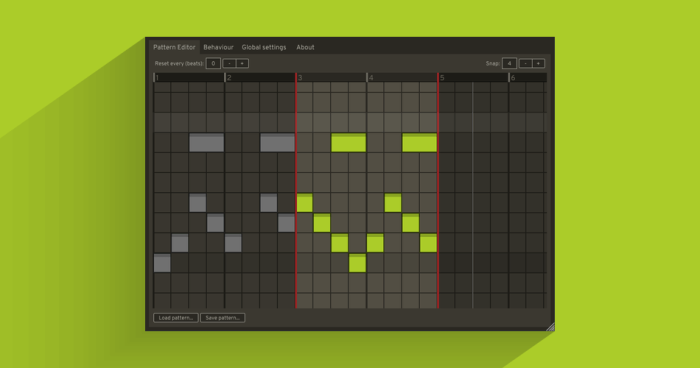Oto Šťáva has released an update to the LibreArp free-form pattern arpeggiator plugin. Version 2.3 includes various new features.
LibreArp is a MIDI effect plugin that takes chords in the form of MIDI input and outputs so-called arpeggios based on the input chords. Arpeggios are generated using a user-created pattern. Each input note is given a number, based on its pitch (lowest to highest). The pattern then determines which note number should play when.
If a pattern contains an event for a note number higher than there is input notes, it wraps around and (by default) transposes the note by an octave. (e.g. the plugin gets a 3-note chord in its input but the pattern is set to play note no. 4 – it actually plays note no. 1 transposed one octave higher than the input note). The pattern has its loop length, i.e. its time loops around indefinitely in a song. The user can also set a loop-reset length, which resets the loop when a set amount of beats elapses.
Changes in LibreArp v2.3
- Smart octaves: When the input chord spans multiple octaves, transposition is done by that number of octaves
- Guarantees that a higher LibreArp note will always be higher in the output MIDI.
- On by default in New: instances; off by default in existing ones.
- The loop can now be resized and moved from the beat bar above the note grid.
- Added a Swing parameter that staggers the pattern in real time.
- Added a Chord size parameter that makes the plugin use a fixed number of input notes
- If the actual number of input notes is greater than the chord size, they are selected according to the New: Note selection mode parameter.
- Added a Bypass parameter for DAWs that do not have a built-in bypass function.
- The plugin no longer crashes when the user clicks Cancel in the preset chooser dialog.
LibreArp is free software licensed under the GNU General Public License v3. VST3 and LV2 binaries are available to download for Windows, Mac and Linux.
More information: LibreArp



